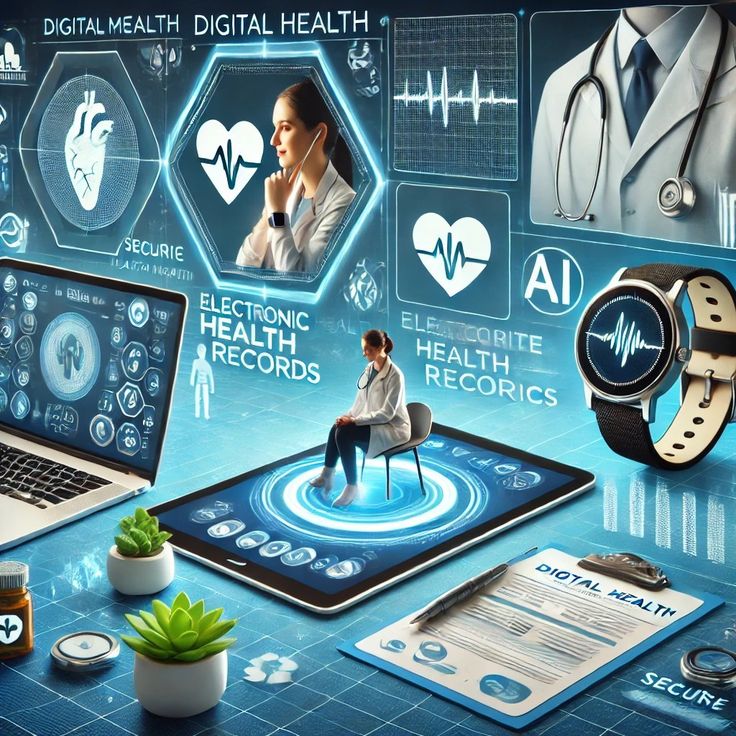The Impact of Technology on Mental Health
Technology has revolutionized how we live, work, and communicate. It has opened doors to new opportunities, improved healthcare, and connected people globally. However, the rapid rise of digital devices, social media, and online communication has also brought challenges, particularly in the realm of mental health. While technology offers tools for mental health support, it can also contribute to stress, anxiety, and other psychological issues. This article explores both the positive and negative effects of technology on mental health, highlighting the importance of finding a balance in its use.
Positive Impacts of Technology on Mental Health
Access to Mental Health Resources
One of the most significant benefits of technology is its ability to provide access to mental health resources. Online therapy platforms, mental health apps, and telemedicine services have made it easier for individuals to seek help. Apps like BetterHelp and Talkspace connect users with licensed therapists, eliminating the need for in-person appointments. This accessibility is particularly beneficial for people in remote areas or those with mobility issues.
Self-help resources, such as meditation and mindfulness apps, also empower individuals to manage stress and anxiety. Apps like Headspace and Calm offer guided meditations, breathing exercises, and sleep aids, fostering mental well-being.
Breaking the Stigma
Technology plays a vital role in normalizing conversations about mental health. Social media platforms have become spaces where individuals share their experiences and struggles. Influencers, celebrities, and mental health advocates use these platforms to raise awareness and reduce stigma. This openness encourages others to seek help and discuss their mental health without fear of judgment.
Support Communities
Online communities and support groups provide a sense of belonging for those dealing with mental health challenges. Forums, social media groups, and specialized apps connect people with shared experiences, creating safe spaces for support and advice. For individuals who feel isolated in their offline lives, these virtual communities can be a lifeline.
Early Detection and Prevention
Advancements in technology have led to the development of tools that can identify mental health issues early. Wearable devices and apps track sleep patterns, physical activity, and stress levels, offering insights into overall well-being. AI-powered tools analyze behavioral patterns and can flag potential concerns, enabling early intervention.
Negative Impacts of Technology on Mental Health
Social Media and Anxiety
While social media has its benefits, it also poses significant risks to mental health. The constant comparison to others can lead to feelings of inadequacy, low self-esteem, and anxiety. Curated posts showcasing idealized lifestyles often create unrealistic expectations, fueling dissatisfaction with one’s own life.
Cyberbullying is another prevalent issue. Negative comments, harassment, and online abuse can cause emotional distress, particularly among younger users.
Screen Time and Sleep Disruption
Excessive screen time can negatively impact mental health. Prolonged exposure to screens, especially before bedtime, disrupts sleep patterns by affecting melatonin production. Poor sleep quality contributes to mood disorders, stress, and decreased cognitive function.
Moreover, excessive use of technology can lead to digital addiction. Constant notifications and the fear of missing out (FOMO) drive compulsive behavior, making it difficult to disconnect and recharge.
Isolation Despite Connectivity
Paradoxically, while technology connects people globally, it can also lead to isolation. Excessive reliance on digital communication can reduce face-to-face interactions, weakening social bonds. For some, the digital world becomes a substitute for real-life connections, contributing to loneliness and depression.
Information Overload
The constant flow of information through news outlets, social media, and emails can overwhelm individuals. This information overload contributes to stress and reduces the ability to focus, leading to burnout.
Balancing Technology and Mental Health
To maximize the benefits of technology while minimizing its risks, it is essential to adopt healthy habits. Here are some practical strategies for maintaining a balance:
Set Boundaries
Establishing boundaries with technology is crucial. Limit screen time by scheduling device-free hours, especially during meals and before bedtime. Use tools like screen time trackers to monitor usage and identify areas for improvement.
Practice Digital Detoxes
Taking regular breaks from technology can reduce stress and improve focus. A digital detox, even for a few hours or a weekend, allows individuals to reconnect with the physical world and engage in meaningful activities.
Curate Online Experiences
Be mindful of the content consumed online. Follow accounts and join communities that promote positivity and mental well-being. Unfollow or mute sources of negativity, including those that trigger comparison or anxiety.
Seek Professional Help When Needed
If technology is contributing to mental health issues, it’s essential to seek professional help. Therapists and counselors can provide strategies to manage digital habits and address underlying concerns.
Leverage Technology Positively
Use technology as a tool for self-improvement. Engage with apps and platforms that promote mental health, such as guided meditation apps or fitness trackers. Participate in online support groups to connect with others who share similar experiences.
The Role of Employers and Educators
Employers and educators play a crucial role in fostering a healthy relationship with technology.
Workplace Initiatives
Workplaces can promote mental health by encouraging digital well-being. Flexible work policies, mental health days, and access to teletherapy services help employees manage stress. Training programs on healthy digital habits can also raise awareness.
Educational Programs
Schools and universities should educate students about the impact of technology on mental health. Programs on responsible social media use, cyberbullying prevention, and digital literacy can empower young people to make informed choices.
Conclusion
Technology is a double-edged sword when it comes to mental health. While it offers incredible tools for support, connectivity, and early intervention, it also poses risks like anxiety, addiction, and isolation. Striking a balance is essential to harness its benefits while mitigating its drawbacks.
By setting boundaries, practicing mindfulness, and leveraging technology positively, individuals can protect their mental well-being. As technology continues to evolve, fostering a healthy relationship with it will remain a critical aspect of mental health for individuals, communities, and society as a whole.

No responses yet